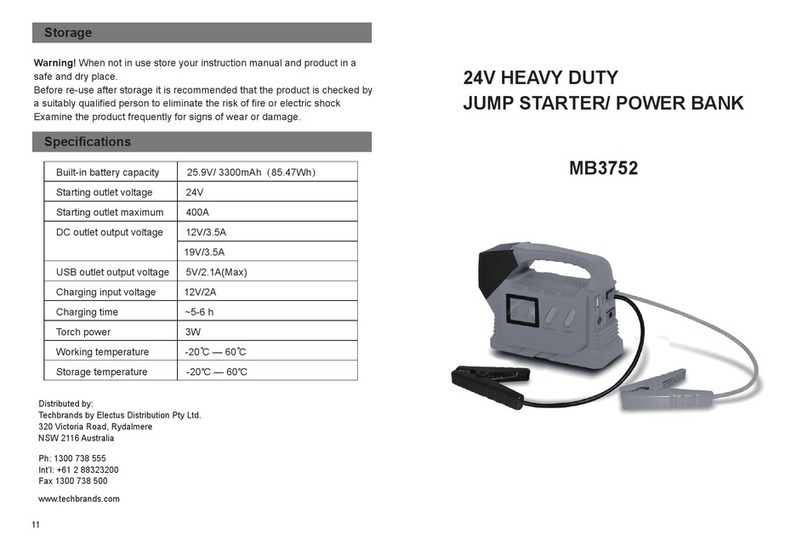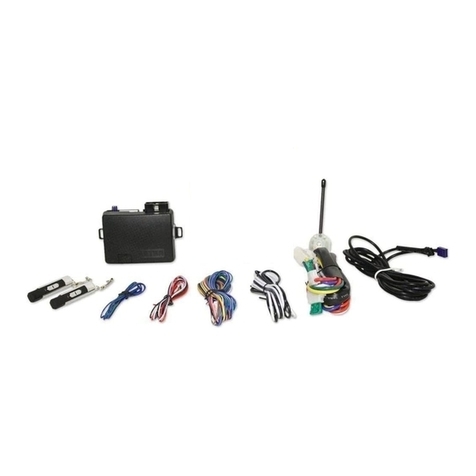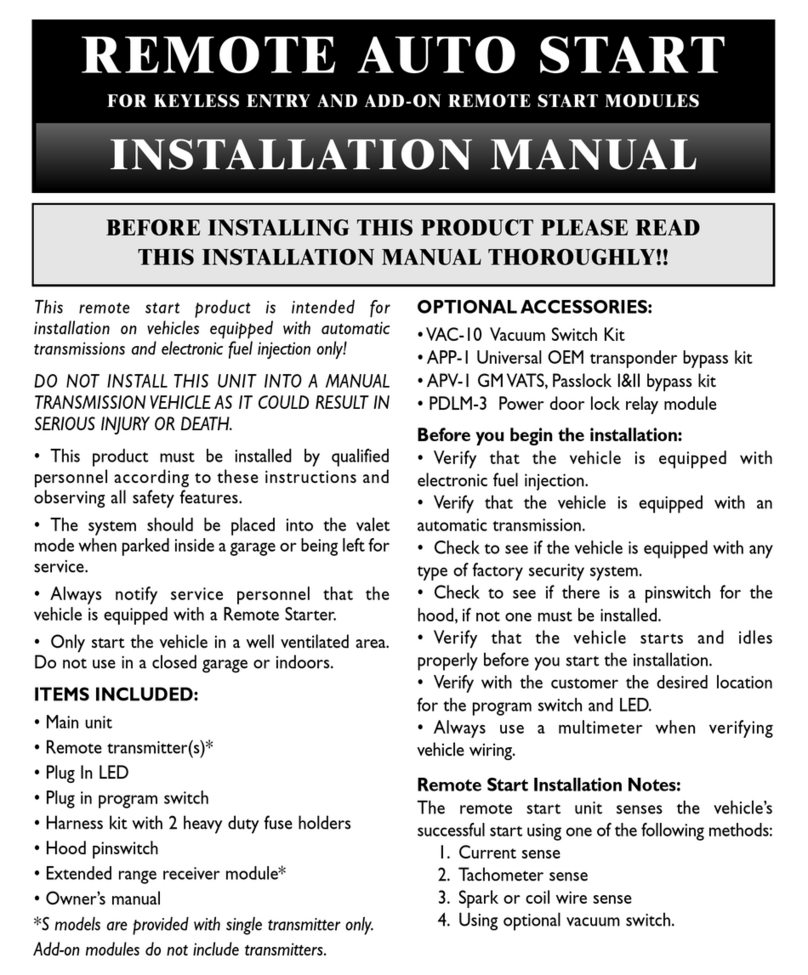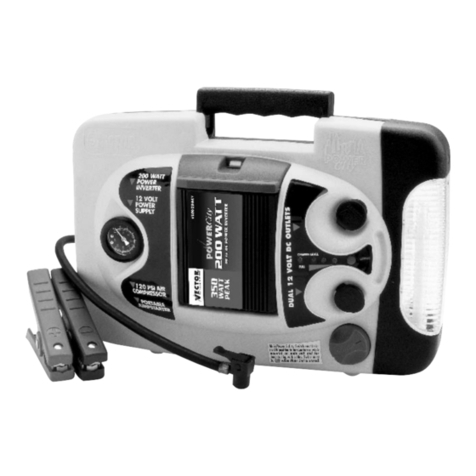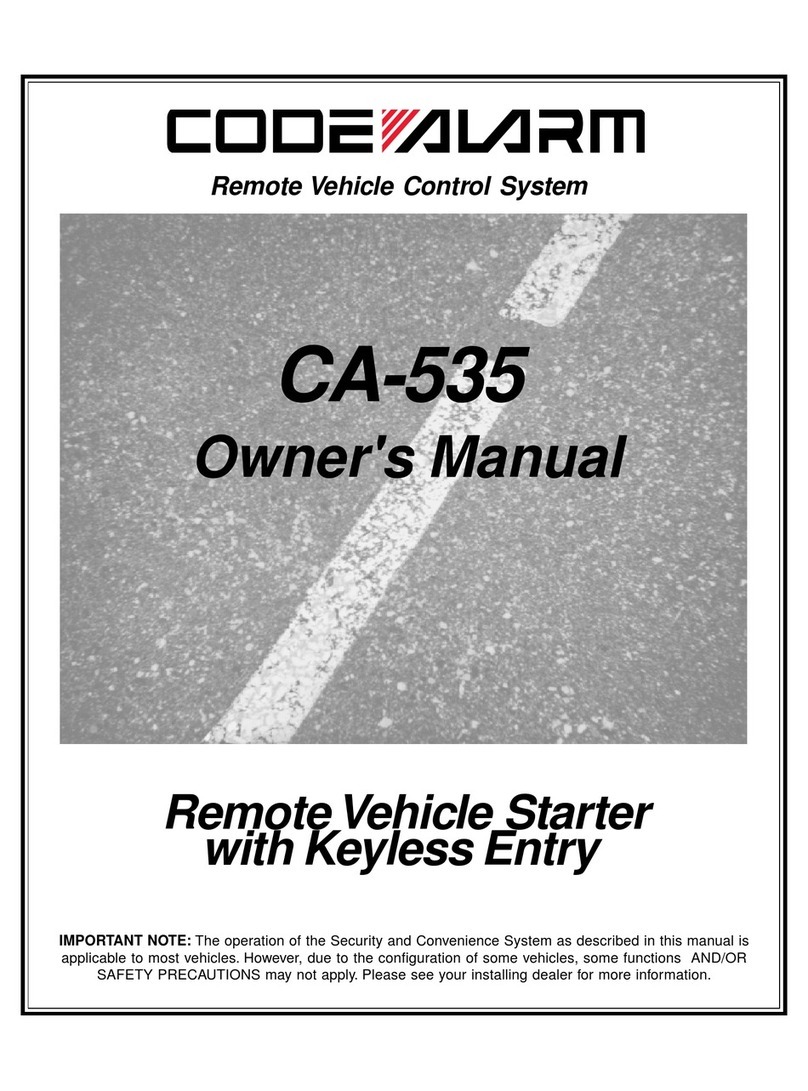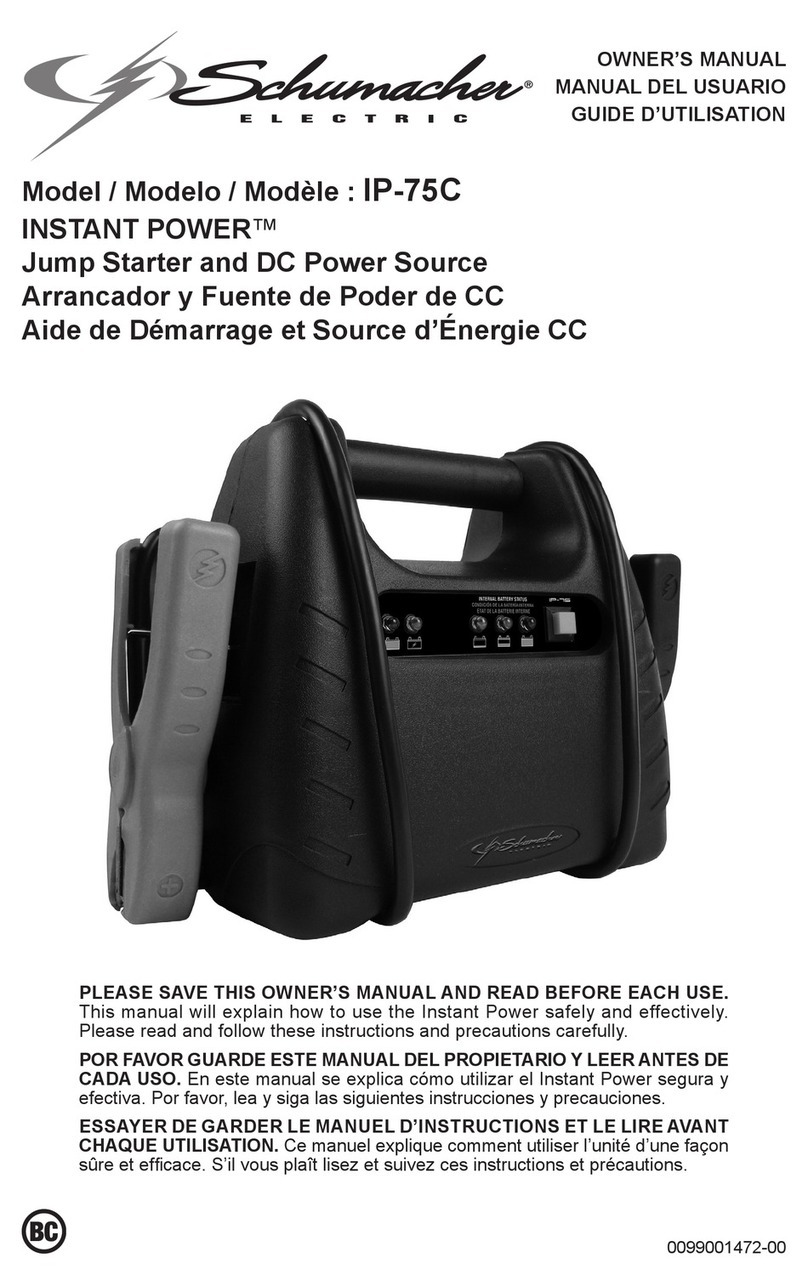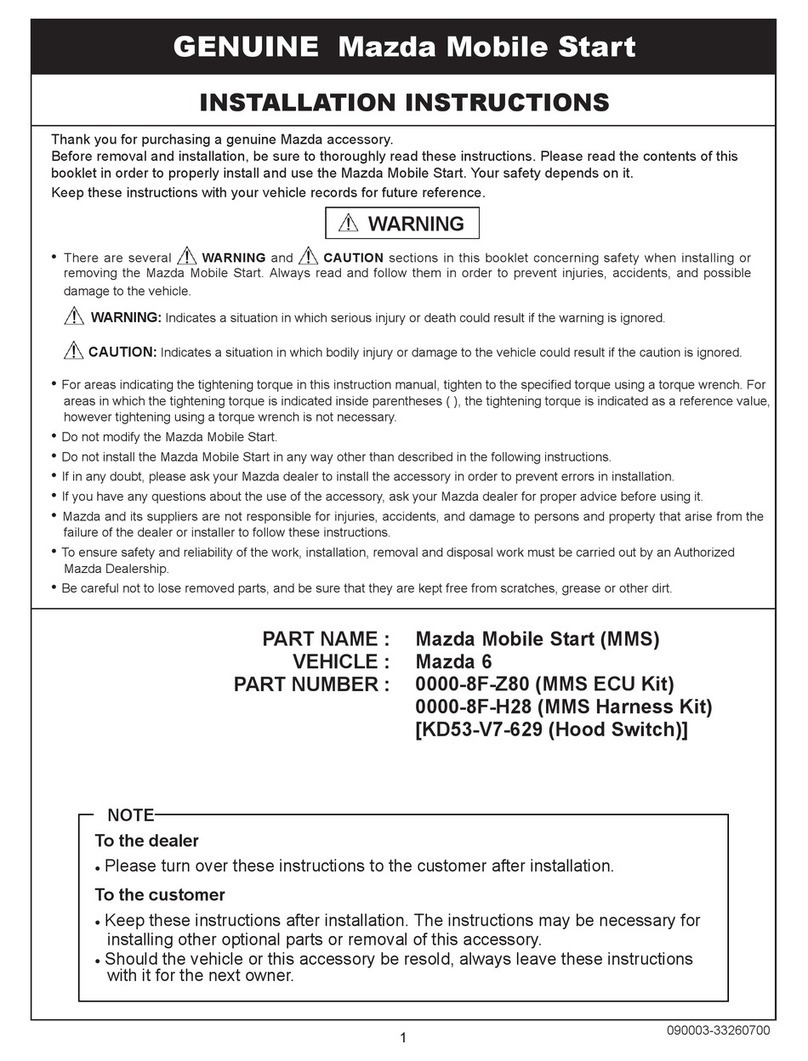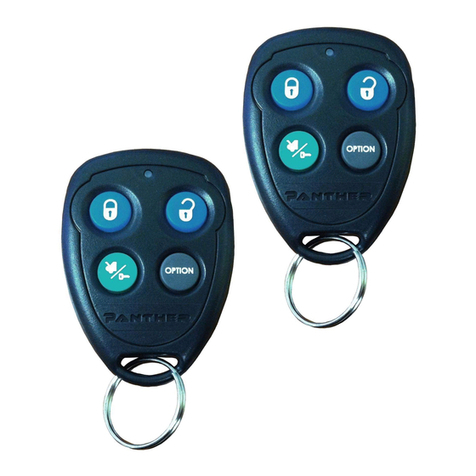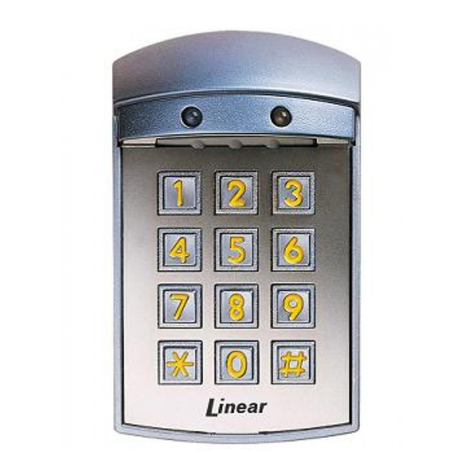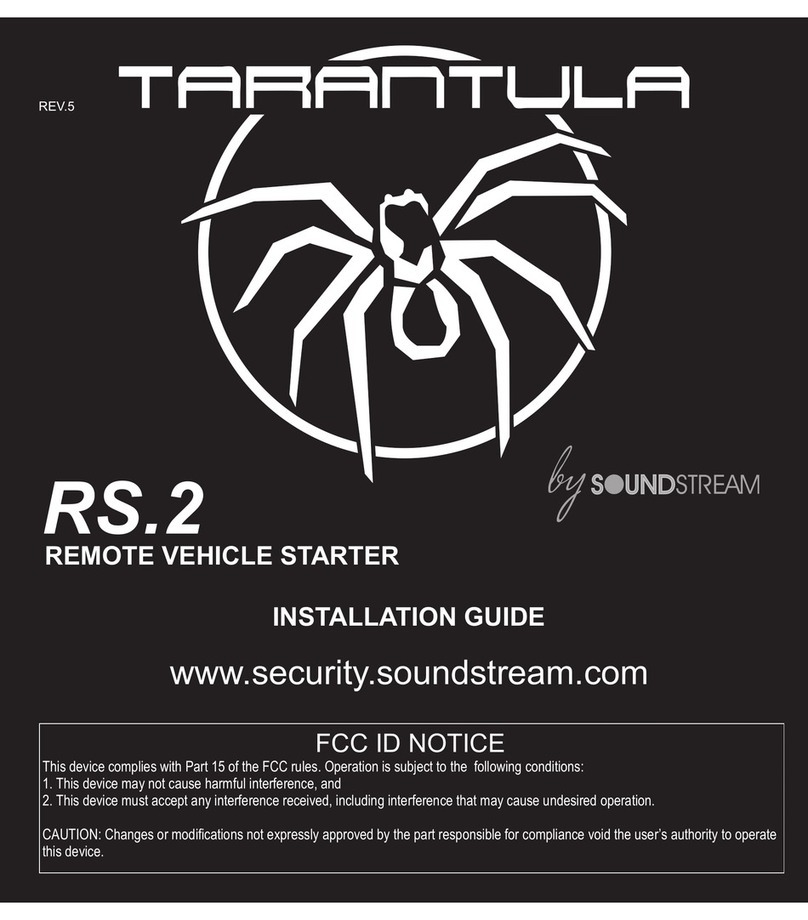
128-9108
2 of 24
Page 2
INSTALLATIONOFTHE MAJORCOMPONENTS:
CONTROLMODULE: (P/N 136-5272)
Select a mounting location inside the passenger compartment (up behind the dashboard).
The mounting location selected must be within 24" of the ignition switch wiring harness to
allow connection of the 6 pin main wiring harness.
Be certain that the chosen location will not interfere with proper operation of the vehicle. Avoid
mounting the module to or routing the wiring around the steering shaft/column, as the module
or wiring may wrap around or block the steering wheel preventing proper control of the vehicle.
Secure the module in the chosen location using cable ties or screws as necessary.
Do Not Mount The Module In The Engine Compartment, as it is not waterproof.
THERECEIVER/ANTENNAVALET SWITCH LEDASSEMBLY:(P/N1181246)
The Superheterodyne Receiver Antenna Assembly which includes the LED and Valet/Program-
ming switch provided with this unit allows routing from below the dash board for maximum
operating range. Choose a location above the belt line (dashboard) of the vehicle for best
reception. Special considerations must be made for windshield glass as some newer vehicles
utilize a metallic shielded window glass that will inhibit or restrict RF reception. In these ve-
hicles, route the antenna toward a rear window location for best reception. Secure the antenna
with double stick tape provided. After securing the antenna with tape, we advise also securing a
section of the antenna cable to a fixed support. This will prevent the antenna from dropping down
in case the double stick tape is exposed to extreme heat which may loosen it's gummed surface.
Route the connector toward the control module using caution not to pinch the cable as this will
cause poor or no RF reception to the control module. Connect the 5 pin cable to the mating
connector of control module.
HOOD PIN SWITCH: (P/N 1363699)
The pin switch included in this package is intended for protecting the hood area of the
vehicle. In all cases, the switch must be mounted to a grounded metal surface. When
the pin switch is activated, (hood/trunk open), it will supply a ground to the input wire
activating the alarm. In addition, the hood switch is required for the safety shut down of
the remote start unit. If the vehicle is being worked on, this hood switch prevents the
remotestartactivationevenifthe RFcommandtostartisissued. WARNING: Thisswitch
must be installed in all applications. Failure to do so may result in personal injury
or property damage.
Mount the switch in the hood locations away from water drain paths. If necessary, a
bracket may be used to move the switch away from rain gutters or allow mounting to the
firewallbehindthehoodseal. Inboth cases the switch must be setuptoallowthehoodto
depress the switch at least 1/4 inch when the hood is closed and fully extended when the
hood is opened. For direct mounting, a 1/4 inch hole must be drilled. Carefully check
behindthechosen location toinsurethedrill willnotpenetrateany existing factorywiringor
fluidlines.
Drill a 1/4" hole in the desired location and thread the pin switch into it using a 7/16" nut
driver or deep well socket. If using the mounting bracket, first secure the bracket to the
desiredlocationandsecurethepinswitchinthepre-threadedmountingbrackethole.
DO NOT PLUG THE SIX PIN MAIN POWER HARNESS OR THE MULTI PIN INPUT /
OUTPUTHARNESSINTOTHECONTROLMODULEUNTILALLCONNECTIONSTOTHE
VEHICLE HAVE BEEN MADE. AFTER SELECTING YOUR TARGET WIRES AS DE-
FINEDBELOW,DISCONNECTTHENEGATIVE BATTERYCABLE FROMTHEVEHICLE
BATTERYPRIORTOMAKINGANYCONNECTIONS.
